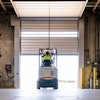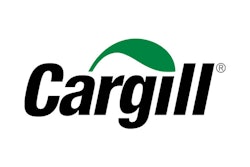
 Phil Hinrichs
Phil HinrichsThere’s a prevalent double standard when it comes to food facility safety management. Think about the measures taken when a visitor enters a food plant production area: You have to dress out, walk through a foot bath, take off jewelry and wear a smock. All of these precautions are designed to keep your product safe — but what about your maintenance crew?
It’s not uncommon to see safety standards and attention to cleanliness become more relaxed in maintenance areas or on the roof of a food plant. Food safety precautions get a lot of attention because owners (rightfully) fear product contamination and highly publicized recalls, but what about the risks outside your building? One maintenance or construction accident can do just as much damage in negative publicity and lawsuits as a product recall.
Plus, OSHA fines are only increasing. For years, a serious offense came with a flat fine of $7,000. That amount went up 78 percent in 2017, and is now going up every year based on inflation rates.
Production staff and maintenance staff are both vital to the success of a facility, so they both deserve the same safety considerations.
Engineer Out Your Safety Hazards
Preventive safety measures are a small investment compared to potential OSHA fines or the costly repercussions of a serious fall or other maintenance-related accident.
So what can you do about it? The ideal approach is to proactively engineer the hazards out of your facility. If you’re building a new facility, get your contractor’s safety team involved in the design process, especially in terms of the roof layout. For an existing facility, assess what needs to be retrofitted to bring your facility up to current safety standards — and then do it.
Designing A Safer Roof Per Updated OSHA Standards
Updated OSHA General Industry standards took effect this year (29 CFR 1910.28) clarifying the walking-working surface and personal fall protection standards, and they add clear training requirements (29 CFR 1910.30) as well.
Since many facilities perform activities that fall under both general industry and construction standards, the new final rule from OSHA eases compliance by bringing many of the general industry standards in line with current construction standards.
Let’s examine some notable considerations from the updated rule.
Fixed and portable ladders
One of the more significant changes relates to safety requirements for fixed and portable ladders. Cages and wells are no longer acceptable forms of fall protection on fixed ladders higher than 24 feet. However, plants have an ample window of time — up to 20 years in some cases — to phase in ladder safety systems or personal fall arrest systems.
Safe distances from roof edge
OSHA rules now specify that fall protection is required if workers are within 15 feet of the roof edge. I always recommend locating hatchways, piping and air units 18 feet from the edge, if possible, to provide a 3-foot “cushion” for workers.
Of course, this isn’t always possible if certain infrastructure needs to be installed in a particular location. In those instances, you must have fall protection in place such as a:
- Guardrail system
- Safety net system
- Travel restraint system
- Personal fall arrest (PFA) system
Also, any stairway leading up the side of a building to the roof now requires guardrails on both sides of the roof access/egress point.
Skylights
Skylights are also specifically addressed in this OSHA standard. A skylight is considered an open hole, which requires a guardrail around it, a cage over it or a safety net/grate under it.
The reasoning is straightforward: You don’t know how strong the skylight is or how much it has deteriorated due to age or weather conditions. In regions with significant snowfall, a worker could forget where a skylight is located and fall through if it’s concealed by snow.
Many skylight manufacturers include an internal grating system as a safety mechanism. However, in a food plant, these internal gratings can become dust collectors and thus pose a food safety risk. Therefore, an outside system like a guardrail or external cage is a better option.
Other Safety Features To Design Or Retrofit Into Your Roof
Aside from the recently released OSHA final rule, there are other perennial features required to meet safety standards and to make your facility’s roof as safe as possible.
Guardrails around hatchways
Hatchways on your rooftop require guardrails on all open sides and an access gate that automatically closes. This ensures a worker doesn’t back into an open hole if the hatchway is left ajar. This standard applies to ship stairs and existing hatchways as well, so it’s critical to retrofit guardrails accordingly if you don’t already have them in place.
If the idea of puncturing holes into the roof of your existing facility sounds unsettling, there are other less “invasive” options available. For example, some manufacturers produce guardrail systems that can be installed at the roof edge or that use weighted plates to secure the guardrails rather than drilling them into the roof.
Parapet height
If you are designing a parapet along a new roof’s edge, don’t stop at two or three feet. Parapets should be at least 39 inches in height to meet fall protection standards. Ensuring you have a tall enough parapet is an easy way to eliminate other safety risks in the future.
Roof walkway pads
Installing walkway pads on a facility’s roof is a common practice, but it serves more than one purpose. These rubber mats designate safe walkways to guide workers on the roof and keep them a safe distance from the roof’s edge.
Not only do walkway pads improve safety, they also can protect the surface of your roof. The roof membrane has insulation beneath it that can be worn down and softened over time due to foot traffic. Walkway pads can extend the life of your roof and save you money and headaches in the future.
Permanent anchorage systems
Roof anchor systems are becoming more prevalent, especially among more safety-conscious, industry-leading companies. These systems involve installing permanent roof anchors at various intervals around the roof perimeter that are used to connect lanyards, lifelines and other forms of tie-off to restrain a worker from reaching the edge of the roof, or, in the event of a fall, provide a fall arrest anchorage point.
The permanent anchorage system allows workers to move freely about the roof without the risks of falling because they’re clipped into a secure anchor point. Installing these systems requires an investment up front, but for owners who are committed to safety for their plant and its workers, it’s worth the cost.
Create Safe Maintenance Areas Inside Your Building
Interstitial spaces where piping, electrical and mechanical infrastructure are located can sometimes get overlooked until engineers or maintenance workers need to access them. It’s crucial that these spaces meet safety standards and aren’t cluttered so that workers can have a clear exit route in the event of an emergency like a fire or ammonia leak.
Although these spaces are not normally occupied work spaces, they are often designed to meet OSHA standards. However, they can become cluttered or neglected once the building is turned over to the owner. I recommend making a routine audit of those spaces and ensuring they’re not being used as a storage “shortcut” but are kept clean and clear.
Safety is every owner’s responsibility, both inside and outside a food manufacturing plant. Rejecting the facility safety double standard can save you money and a public relations nightmare — but more importantly it can save a life.
About Stellar
Stellar is a fully integrated firm focused on planning, design, pre-construction, construction, refrigeration, mechanical & utility, building envelope, and total operations & maintenance services worldwide. Visit the company's blog at www.stellarfoodforthought.net or learn about its projects at stellar.net.






















